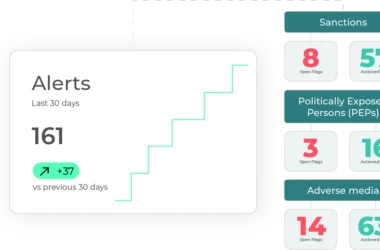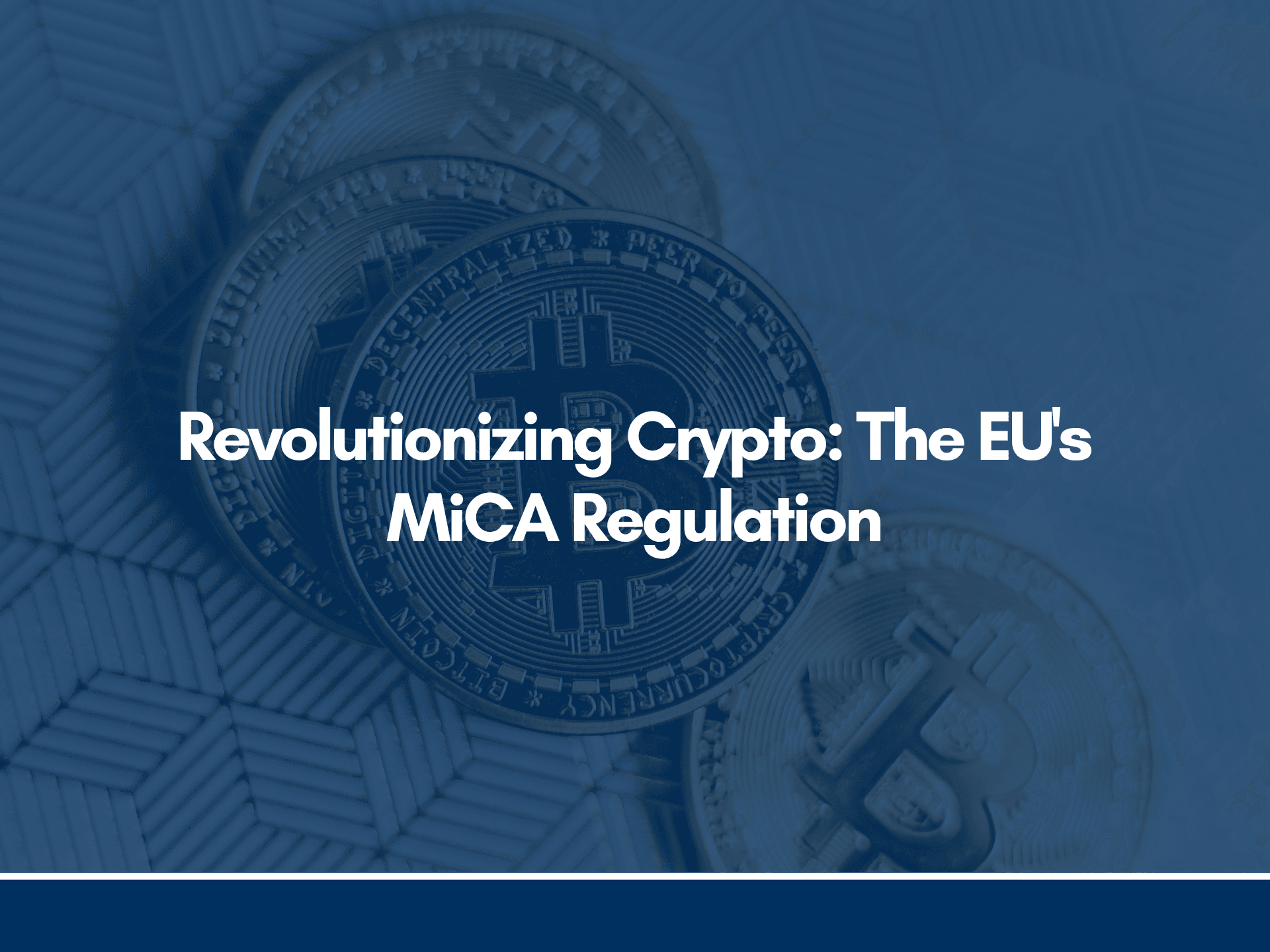Table of Contents Show
Opening View
The Cost of Standing Still: Why Static KYC Keeps Failing
Annual refresh cycles leave month-long blind spots. Fraud rings and sanctioned entities now move money in minutes, not years. Each time you wait for a scheduled review, risk can fester: dormant accounts spring to life, beneficial owners vanish behind fresh shells, and newspaper headlines turn a once-low-risk client radioactive overnight. Banks pay the fines, customers feel the friction, and investigators drown in stale data.
Take the 2023 West-Port case. A shipping company passed onboarding with a low-risk score and sat untouched for 18 months. In month 17, it began routing payments through a newly incorporated subsidiary in a high-risk jurisdiction. By the time the next periodic review arrived, $42 million had travelled through the network, some of it tied to sanctioned entities. A simple real-time trigger on jurisdiction change could have stopped the flow on day one.
What You’ll Take Away
This article walks through the nuts and bolts of perpetual KYC—continuous monitoring that updates risk in near real time. You will learn how it differs from periodic reviews, the regulations nudging firms in this direction, and the practical steps to weave pKYC into existing tooling. We end with a no-nonsense look at three vendors and a checklist you can act on tomorrow. By the last line, you will have a pragmatic blueprint you can pitch to your leadership team on Monday morning—no buzzwords, no untested hype.
pKYC Demystified
Continuous Monitoring vs. Periodic Reviews
Traditional KYC checks a box on day one, then again in 12, 24, or 36 months. In between, analysts rely on ticketing systems or tip-offs to spot change. pKYC turns that model on its head: the default assumption is that risk is always changing. Instead of waiting for a date, the system pulls new data, scores it, and fires an alert only when the delta matters.
Think of periodic KYC as taking a single photograph at onboarding and another every birthday. pKYC installs a security camera—always on, motion-activated, and smart enough to ignore the cat.
| Aspect | Periodic KYC | Perpetual KYC |
|---|---|---|
| Trigger | Calendar-based | Event-based + scheduled health checks |
| Data Pull | Full file refresh | Incremental updates |
| Analyst Effort | High but bursty | Lower but continuous |
| Customer Friction | High at refresh | Low, unless risk spikes |
Core Data Streams
Internal Transaction & Behavioural Data
Look first at what you already own: velocity spikes, unusual geographies, off-platform payments, and login anomalies. These self-generated signals require no vendor contract yet often give the earliest warning. For example, a retail brokerage noticed a pattern of small daily deposits followed by immediate crypto withdrawals. A pKYC rule linked sudden crypto activity to the client’s historical fiat-only profile, raising the score and freezing the account until a human verified origin of funds.
External Adverse-Media & Sanctions Feeds
Screening providers scrape global news, enforcement bulletins, and sanctions lists multiple times a day. Tie each high-risk hit to the client profile with a confidence score to keep noise down. Weight is key: a front-page investigative report in a tier-one paper may add 30 points; a questionable blog post perhaps 5.
Corporate Registry & Beneficial-Ownership Updates
Many true-positive alerts start with a boardroom shuffle. Modern APIs let you ingest registry changes overnight. Map new directors to existing risk lists and surface hidden links.
How Dynamic Risk Scoring Works (Without the Hype)
A baseline score is set at onboarding. Each new datapoint carries weight—positive or negative—and decays over time. A single low-value cash deposit barely nudges the needle, while a PEP match spikes the score instantly. Thresholds are calibrated so that only material shifts break through.
Decay matters. An adverse-media article later disproved should glide down to zero over weeks, not cling forever. Many teams use an exponential decay function: score ×= e^(-λ · days). The aim is a signal-to-noise ratio that keeps alert queues lean.
Common Misconceptions
“Perpetual” does not mean “all data, all the time.” Over-collecting overwhelms scoring engines and inflates costs.
Machine learning is optional. Rule-based systems still outperform black-box models when data is scarce.
Regulators don’t mandate pKYC—yet. But examination trends reward firms that can show real-time controls.
The Rulebook in Motion
FATF Recommendations That Point to pKYC
FATF’s Recommendation 10 demands “ongoing due diligence.” Guidance papers from 2023 clarify that “ongoing” should leverage technology, not just manual file reviews. During the 2024 mutual evaluations, several jurisdictions cited lack of real-time screening as a deficiency—even where annual reviews were pristine.
EU AML Package & Travel Rule Changes
The incoming EU AML Authority (AMLA) will expect firms to sync screening frequency with real-time transaction monitoring. Meanwhile, the 2025 Travel Rule update mandates instant data exchange for crypto transfers above €1,000—another nudge toward perpetual checks.
Key U.S. Signals: FinCEN, OCC and State-Level Moves
FinCEN’s 2024 Beneficial Ownership Rule requires updates within 30 days of any change—rendering annual refreshes obsolete. OCC exam manuals now include a “Continuous KYC Monitoring” section, and early enforcement shows little patience for firms sticking to rigid cycles.
Other Notable Jurisdictions to Watch
Singapore’s MAS, the UK’s FCA, and Australia’s AUSTRAC all released papers in 2024 encouraging automated, event-driven KYC. Tracking these shifts keeps your roadmap aligned.
Designing a pKYC Framework
Selecting High-Value Data Sources
Start with impact mapping: which events, if missed, would cause regulatory breach or headline risk? Rank feeds by coverage, timeliness, and verifiability. Field-test feeds before production; if fewer than 3 % of hits are actionable, tighten matching logic or drop the feed.
Orchestration & Automation Layer
A common architecture pattern:
- Collector microservices pull data from APIs and SFTP drops.
- Normalizer converts sources to a canonical JSON schema.
- Enricher adds metadata such as geo-coding.
- Scorer updates client risk profiles in a graph database.
- Alert hub pushes actionable alerts via webhooks.
Alert Management, Investigation & Escalation Paths
Example triage rule:
If risk-score jump ≥ 15 and transaction ≥ USD 10 000 → open case
Else if new-director PEP match → open case
Else auto-suppress
Dashboards showing deadline countdowns keep SAR timelines on track.
Governance, Audit Trails & Model Validation
Supervisors ask three things: What did you know? When did you know it? What did you do? Keep immutable logs, validate scoring models annually, and minute quarterly threshold reviews.
Build vs. Buy Decision Tree
| Question | Lean Build | Lean Buy |
|---|---|---|
| In-house data-science capacity? | Yes → build scoring; buy feeds | No → buy both |
| On-prem hosting mandatory? | Yes → build | No → either |
| Time-to-compliance < 12 months? | No → build | Yes → buy |
A hybrid approach—vendor data, in-house scoring—often wins.
Plugging pKYC Into Existing Workflows
API vs. Batch Ingestion
APIs give near-instant updates but can throttle under load. Batches smooth spikes and suit legacy systems. Many firms stream sanctions feeds and batch registry data.
Data Quality Checks & Maintenance
Automate tests for null fields, stale timestamps, and schema drift. A broken feed can be worse than no feed, creating false confidence.
Training Analysts for Continuous-Risk Thinking
Short scenario-based workshops beat dense e-learning. Rotate analysts into feed-tuning projects to improve alert commentary.
Change-Management Tips for Compliance Leads
- Start small. Pilot one product line.
- Measure early. Track false-positive rate weekly.
- Communicate wins. Share live dashboards.
- Iterate. Treat pKYC as a program.
- Budget realistically. Set aside ≈ 15 % for model maintenance.
Case Study: NeoBank Rollout
NeoBank moved from annual reviews to pKYC in eight months: discovery, build, go-live, full coverage. Results: 92 % fewer overdue reviews, 38 % fewer false positives, 25 % less analyst overtime.
Measuring Success
KPIs That Matter
- Alert-to-Case Conversion Rate
- False-Positive Ratio (aim < 5 : 1)
- Time-to-Clear (simple hits < 2 hours)
- Regulatory “Matters Requiring Attention”
Reducing False Positives
Combine risk-score delta, transaction context, and historical behaviour before opening a case. Feedback loops retrain models weekly.
Total-Cost-of-Compliance Metrics
Track cost per thousand customers. pKYC often reallocates 30–40 % of manual effort to higher-value tasks.
Storytelling With Dashboards
Build role-specific views: analyst, manager, board. If a metric needs a footnote, find a clearer visual.
Benchmarking Maturity Levels
| Level | Key Traits | Typical Timeframe |
|---|---|---|
| Ad-hoc | Manual Google searches, Excel logs | 0–3 mths |
| Repeatable | Basic sanctions API, monthly media batch | 3–9 mths |
| Defined | Integrated feeds, rules-based scoring | 9–18 mths |
| Managed | Continuous data-quality monitoring | 18–30 mths |
| Optimising | ML-assisted triage, self-service analytics | 30 mths + |
Benchmarking helps secure budget: each rung has a clear ROI story.
Market Snapshot: Top 3 pKYC Solution Providers (2025)
ComplyAdvantage
- Features: 15-minute sanctions + media updates, graph analytics, ClientDNA clustering.
- Pricing & Integration: Tiered per-match; REST API; ISO-27001 cloud.
- Good Fit: Mid-sized fintechs; note on-prem support sunsets 2026.
Moody’s KYC360
- Features: Combines credit and AML data; built-in workflow; ML clusters.
- Pricing & Integration: Package per entity; cloud or on-prem; native connectors.
- Good Fit: Global banks already licensing Moody’s data; minimum 10 000 entities.
LexisNexis Risk Solutions
- Features: Deep U.S. public-records, device-risk signals, Safe-List feedback loops.
- Pricing & Integration: Per-user + per-check; SDKs; edge deployment possible.
- Good Fit: Institutions needing U.S. records and fraud-risk synergy.
What’s Next for pKYC
AI-Driven Risk Signals
LLMs summarise media and score sentiment; regulators will issue AI-governance guidance by 2026.
Real-Time Beneficial-Ownership Graphs
Standardised registry APIs by late 2025 will cut complex investigations in half.
Privacy-Enhancing Technologies
Federated learning lets institutions share risk signals without exposing PII. Sandbox pilots are live in Europe and Canada.
Domestic Real-Time Payment Rails
As systems like FedNow go 24/7, pKYC must dovetail with always-on fraud teams. Simulate breaches at 3 a.m.—not just office hours.
Carbon Footprint of Data Processing
Continuous monitoring means constant compute. Efficient code and serverless architectures lower both cloud bills and CO₂.
Global Data Collaboration Initiatives
Utilities such as GLEIF’s verifiable LEI and Wolfsberg cross-bank KYC exchanges aim to share high-quality entity data once and reuse it many times. Compliance teams should track these pilots: successful adoption means fewer repeated document requests and more reliable data for external assurance partners, shrinking onboarding time from days to minutes.
Quick-Start Checklist
- Map top five data sources that would reduce blind spots.
- Define alert thresholds for high, medium, low change events.
- Pilot an API feed for sanctions updates—one product line only.
- Measure alert-to-case conversion weekly.
- Document governance ownership.
- Train analysts on continuous review workflow.
- Present early wins to leadership.
- Expand coverage incrementally.
- Review model performance quarterly.
- Archive logs in an immutable store.
References & Further Reading
FATF Guidance 2023 • FinCEN Beneficial Ownership Rule 2024 • EU AML Package (proposed) • MAS Consultation Paper 2024 • FCA TechSprint Findings 2024 • AUSTRAC Guidance 2024 • West-Port Consent Order 2023 • Vendor briefs (ComplyAdvantage 2025, Moody’s 2025, LexisNexis 2024)
Perpetual KYC is no longer a future trend; it is fast becoming a licence to operate. Institutions that shift early cut remediation costs, keep regulators calm, and protect the financial system in real time. Commit to one small experiment this week, gather data, refine, and watch the risk gap close today.




